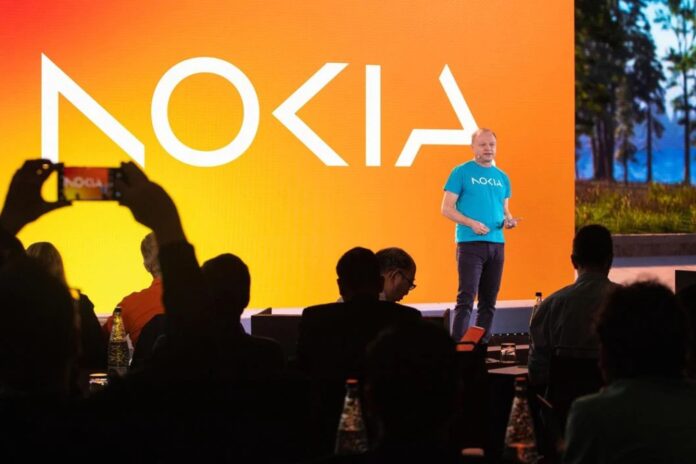Nokia kicked off MWC 2023 unveiling a new brand, refreshed strategy and vision for networks that “sense, think and act”
With the new brand and logo, on Sunday the Finnish vendor affirmed its identity as a business-to-business (B2B) technology company, shedding its historical association with consumers’ mobile devices.
“Nokia is an iconic brand … but we had to reposition ourselves as a B2B technology brand. Operators know us well, but in the wide world of enterprises, and in particular industrial companies, they do not know who we are,” said Pekka Lundmark, President and CEO of Nokia (pictured above at MWC).
The logo is designed to symbolise collaboration and Nokia’s role in “delivering the next evolution in critical networking through networks that sense, think, and act,” he said. The classic blue colour has also been replaced by a rainbow of different colours meant to reflect an “energised, dynamic, and modern Nokia.”
Industrial transformation
Nokia’s sees its networking technology at the heart of industrial transformation as networks adopt the flexibility and scalability of the cloud.
“When networks meet cloud, this will unleash the full promise of the industrial, enterprise and consumer metaverses, which until now have only shown a glimpse of their full true potential. As we fulfil these new requirements for our customers, we see opportunities to grow, expand into adjacencies and transform our business models,” he said.
Along with new look, Lundmark also presented a refreshed corporate strategy moving the company forward on six tracks:
- Grow communication service provider (CSP) business faster than the market. Nokia expects the compound annual growth rate (CAGR) between now and 2027 is expected to be just 1%, which means it needs to take share from its rivals to grow. Lundmark pointed to improvements in the company’s portfolio, which is now “significantly more competitive” than it was two years ago, along with “geopolitical tailwinds continue to favour us.”
- Expand the enterprise customer base. Nokia’s enterprise business currently accounts for 8% of its total revenue and it wants that percentage to be in double digits “as quickly as possible”, said Lunkmark. Here, partnerships will be key. Nokia has 140 go-to-market partners for wide area private wireless and 180 partners for campus networks. “This is how you build scale,” he said.
- Continue to manage the portfolio actively. The company wants leading positions in the segments it decides to compete in and flagged passive optical networks and private wireless as examples of where it is strong.
- Monetise Nokia’s intellectual property beyond the mobile device sector and continue to invest in research and development.
- Implement new business models, including as-a-service. Recent examples include Nokia’s 5G standalone core-as-a-service and the AVA for Energy software-as-a-service (SaaS).
- Make Environmental, Sustainability, and Governance (ESG) a competitive advantage.
2030 vision
Nishant Batra, Chief Strategy and Technology Officer at Nokia, said the next phase of digitalisation will be defined by immersive metaverses. In industrial product design, for example, an entire product lifecycle could be envisioned via digital twins. And to support such futurist scenarios, networks will need to change.
“Networks don’t just connect, they also sense … and that will then create the need for thinking and then acting on that data. Our belief is that the networks of the future will sense, think, and act”, said Batra.
In addition, future networks will not only need to deliver performance but they should also be “consumable”.
“This allows every other industry to consume these networks to potentially transform themselves,” he said.
Nokia believes enterprise and industrial metaverses will be more exciting than those designed for immersive consumer experiences. It wants to work with enterprises on building their “metaverse-driven strategies,” said Batra.


